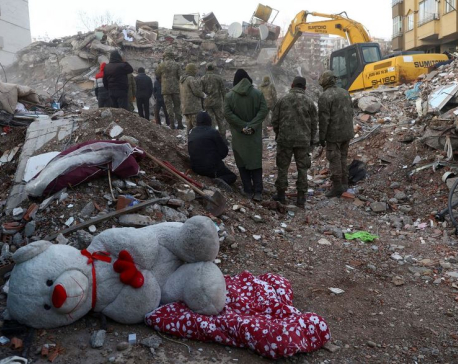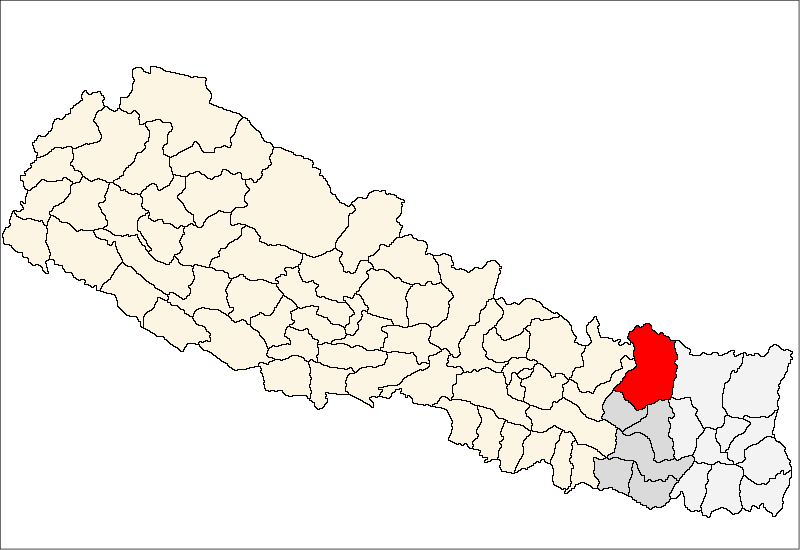
OR
BLOG
Innovative Engineering Solutions for Nepal's Seismic Resilience
Published On: December 18, 2023 10:30 AM NPT By: Bikram Rawat

Bikram Rawat
The author is a former engineer of the National Reconstruction Authority (NRA). He received his B.E. in Civil Engineering from Jawaharlal Nehru Technological University, Anantapur and M.Sc. in Construction Management from Nepal Engineering College- Centre for Post graduate studies.news@myrepublica.com
More from Author
Nepal is a land of magnificent landscapes and rich cultural heritage. Unfortunately, it is also a region highly susceptible to seismic activity. The region has a long history of earthquakes, with devastating events like the 2015 Gorkha earthquake still etched in the collective memory. In this context, the Jajarkot earthquake that struck Nepal on November 3 at 23:47 NPT registering a magnitude of 6.4 serves as a poignant reminder of the need for a comprehensive and multi-faceted approach to disaster response, one that extends beyond traditional engineering solutions. However, the recent Jajarkot earthquake serves as an urgent call for innovation that echoes beyond the affected region, demanding a nationwide awakening in engineering practices. This seismic event has propelled engineers and authorities to reassess conventional methods, triggering a call for innovation that resonates across the nation.
The Jajarkot earthquake has sparked a nationwide conversation on engineering practices, instigating a collective awareness that innovation is not a luxury but a necessity for Nepal's resilience. The urgency to fortify against seismic events extends far beyond the directly affected regions, creating a momentum for innovation that permeates the entire nation. This awareness, catalyzed by the recent earthquake, is prompting engineers, architects, and policymakers nationwide to rethink and reinvent their approaches to construction and disaster response.
The aftermath of the Jajarkot earthquake necessitated a comprehensive reconstruction approach, with a notable emphasis on innovative engineering techniques. Engineers could play a pivotal role in adopting seismic retrofitting, introducing earthquake-resistant building materials, and incorporating advanced design principles into the reconstruction process. This focus aims to fortify structures against future seismic events, ensuring a more resilient built environment. The engagement of local communities in the planning and execution of engineering solutions also underscored the importance of a collaborative and inclusive approach.
The reconstruction efforts post the Gorkha earthquake in 2015, spearheaded by the National Reconstruction Authority(NRA), a legally mandated governmental agency for leading and managing the earthquake recovery and reconstruction in Nepal, offer a valuable benchmark for assessing the progress and impact of engineering techniques in seismic resilience. In the wake of the Gorkha earthquake, there was a significant push towards building back better through enhanced building codes, updated construction standards, and geotechnical assessments. The NRA's endeavors sought to ensure that reconstructed structures were more resistant to seismic forces, addressing the vulnerabilities exposed by the earthquake. The recognition of the crucial role engineering plays in reconstruction has been evident. The progress made in the wake of the Gorkha earthquake could have laid the groundwork for a more informed and proactive approach to reconstruction following the Jajarkot earthquake. While the NRA's focus on the 32 affected districts was essential for targeted and immediate relief, it inadvertently created a divide. The seismic risks and vulnerabilities extended far beyond these districts, necessitating a more holistic and nationwide approach to earthquake resilience. The confined mandate limited the potential for mobilizing the wealth of knowledge and skilled manpower available across the entire nation.
Remote areas like Jajarkot pose unique logistical hurdles, making the implementation of engineering solutions more intricate. The need for ongoing capacity building, community engagement, and the adaptation of engineering techniques to local contexts remain critical lessons drawn from the experiences of the Gorkha earthquake.
The significance of engineering techniques in the reconstruction of earthquake-affected regions in Nepal cannot be overstated. Drawing upon the lessons of the Gorkha earthquake, the reconstruction efforts post the Jajarkot earthquake emphasize the importance of continuous improvement, innovation, and community involvement across the nation. Expanding the focus of reconstruction and engineering innovation nationwide is not without its challenges. Logistical complexities, diverse topographies, and varying socio-economic conditions pose hurdles that demand nuanced and adaptable solutions. However, these challenges present opportunities for creativity, innovation, and the development of engineering solutions that are scalable and applicable across different regions of Nepal. As Nepal continues to grapple with seismic challenges, the integration of effective engineering techniques stands as a beacon for creating a more resilient and earthquake-resistant nation.
You May Like This

Lessons from the Tragedy in Turkey
The earthquake that struck Turkey and Syria on Monday serves as a sobering reminder of the devastating power of the... Read More...

Federalism: learning by doing
Issues have emerged regarding effective implementation of federalism. But there is a long way to go and these issues can... Read More...

Helping women re-envision a better Nepal: Women LEAD Nepal
KATHMANDU,March 7: Women LEAD Nepal started as an idea that women and girls could change the trajectory of Nepal’s future and... Read More...




Just In
- NEA Provincial Office initiates contract termination process with six companies
- Nepal's ready-made garment exports soar to over 9 billion rupees
- Vote count update: UML candidate continues to maintain lead in Bajhang
- Govt to provide up to Rs 500,000 for building houses affected by natural calamities
- China announces implementation of free visa for Nepali citizens
- NEPSE gains 14.33 points, while daily turnover inclines to Rs 2.68 billion
- Tourists suffer after flight disruption due to adverse weather in Solukhumbu district
- Vote count update: NC maintains lead in Ilam-2













Leave A Comment